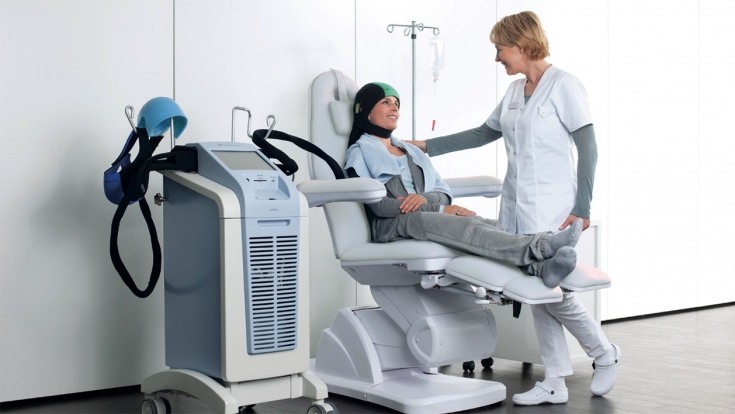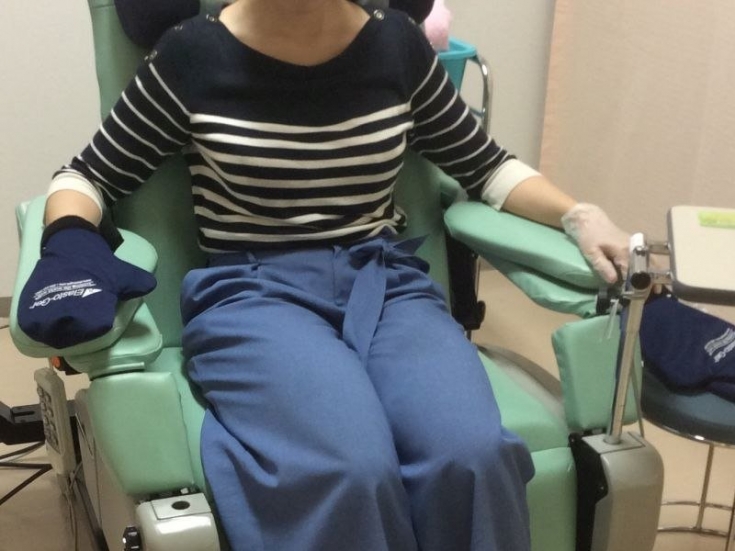Cryotherapy of the scalp may help prevent alopecia in patients receiving cancer chemotherapy that contains a taxane.
These chemotherapy drugs have significant side effects. Taxanes cause dermatological reactions in the form of alopecia, maculo-papular rash, erythema, itching, tissue edema, deformation of the nail plate. Other manifestations include: pneumonia, myalgia, nausea, vomiting, diarrhea, arterial hypo- or hypertension, anemia.
The estet-portal.com article provides information on a study on the effectiveness of cold treatment in preventing skin side effects and nail plate deformities.
Need for cryotherapy when prescribing chemotherapy drugs
Paclitaxel and docetaxel are chemotherapy drugs known as taxanes. Taxanes can inhibit cancer cells, preventing them from dividing and multiplying. They are effective in the treatment of Kaposi's sarcoma, breast cancer, non-small cell lung tumor and ovarian cancer.
Almost all side effects are short-term and regress after stopping the intake of the chemotherapy drug into the body. However, do not forget that the quality of life of the patient is highly dependent on the appearance. Sudden hair loss, skin changes and deformation of the nail plate are the most common and, unfortunately, long-term manifestations of taxanes.
Follow us on Facebook
A retrospective study of the effectiveness of cryotherapy
Dr. Friedman and colleagues searched the literature from 1980 to August 2018 for primary clinical studies detailing the prophylactic use of cryotherapy for taxane-induced dermatological side effects.
A total of 6 randomized clinical trials, 4 non-randomized clinical trials, 18 cohort studies, 3 case control studies, 1 intersectoral study, and 2 case reports were included, with a total of 5,647 patients.
A new compound has been synthesized for the treatment of alopecia and skin inflammation
Twenty-one studies looked at preventive interventions for taxane-induced alopecia and 12 focused on skin and nail changes.

Cold treatment of alopecia after chemotherapy: efficacy analysis
20 (95%) of 21 studies confirmed the use of either cold caps filled with gel and placed in a special cap or a head cooling system in the form of a hood connected to a coolant circulation device to reduce alopecia; however, efficacy varied substantially, depending on the chemotherapy regimen. Scalp cooling has generally been considered safe in all relevant studies.
Cold treatment is only effective when used at the start of chemotherapy, as it is a preventive method.
Cold treatment of dermatological pathology after chemotherapy
Similarly, the use of cooling gloves and socks to prevent dermatological side effects on hands and feet was considered safe in 7 (88%) of 8 studies; however, discomfort was common and one patient suffered frostbite.

Overall, cooling gloves were approved in 4 (67%) of 6 studies to prevent nail plate deformity from taxane toxicity and 3 (60%) of 5 studies to prevent distal extremity skin changes.
Cryotherapy is generally safe, well tolerated, and does not increase the risk of metastasis or failure to respond to therapy.
Preventive cryotherapy – a significant contribution to the psychological comfort of the patient
The exponential explosion of new targeted cancer drugs will only increase the incidence of dermatological complications, which have been shown to have a huge impact on patients' quality of life.
Cryotherapy appears to be a safe and effective means of preventing much of the damaging hair loss and nail changes that characterize these sophisticated treatment regimens.
While more research is needed, especially regarding cooling temperatures, times and standardized protocols, cryotherapy – it is a practice that changes the treatment towards the psychological comfort of the patient.
You may be interested in the article on our website estet-portal.com in the "Cosmetology" section; Cold treatment: what can procedural cryotherapy do







Add a comment